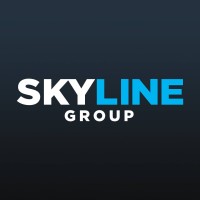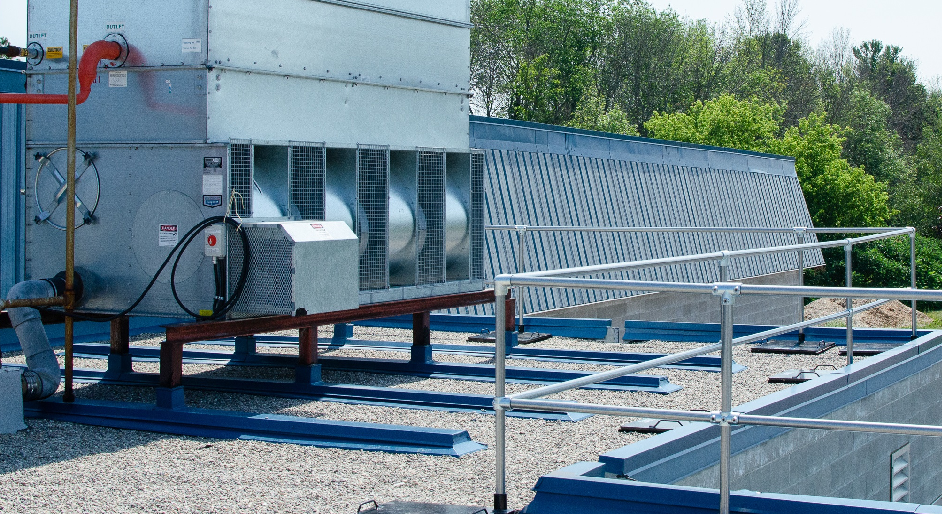The building design process includes many considerations for how it will serve the occupants working or living within it. And often, the technology required to optimize building safety, comfort, and efficiency ends up being installed on the roof. These components may be necessary, but any piece of equipment added to a roof poses a degree of risk for those who may need to work in that space. And with rooftop footprints and configurations in constant flux, considerations for safety cannot fall through the cracks.
“Like every building component, roof footprint, features, and conditions can evolve over time; these changes can introduce challenges with accessing equipment,” says Vernon Ghinn a roof access and safety specialist at Skyline Group. “That’s why rooftop safety isn’t a set it and forget it responsibility; it is something that should be reviewed and improved upon quarterly to ensure you’re staying in compliance and keeping everyone safe.”
Working at height comes with numerous risks. More and more, those risks include having to navigate access points (e.g., ladders or hatches) or rooftop equipment (e.g., HVAC systems, ducts, solar panels) that’s been installed throughout the space and – more frequently – near roof edges.
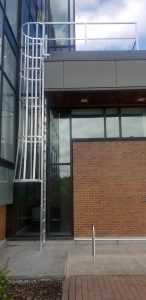 For example, says Ghinn, “At times, rooftop units are installed at the edge because that happens to be the quickest and easiest location for the installers to place the unit. The challenge lies in servicing those units, however, as a safety solution will be required to create a safe perimeter and working environment.”
For example, says Ghinn, “At times, rooftop units are installed at the edge because that happens to be the quickest and easiest location for the installers to place the unit. The challenge lies in servicing those units, however, as a safety solution will be required to create a safe perimeter and working environment.”
Roofing layouts can also pose risks. For instance, flat roofs can become slippery to walk on when wet depending on the roofing membrane. Added to these traditional hazards are the ones that appear over time. For example, building upgrades that affect the roof structure and design can also impact its elevations, requiring new safety equipment and considerations.
“That’s why it is important to understand the future state of your roof and how the roof is being accessed,” says another safety rep with Skyline. “Corridors are provided inside the building for safe access, so the same consideration should be given to the safety personnel required to keep the building running while accessing the roof.”
Another trend impacting roof safety is that rooftops are becoming more crowded. As land prices rise and available space in populated areas decreases, organizations are optimizing their investment by making more use of their available space. Some of that focus is being turned to rooftops, where building operators are turning their rooftop into a publicly accessed space (e.g., a garden or patio) or investing in energy-efficient technologies (e.g., green roofs or solar panels). The result is a packed environment that requires safer access to all roof areas and increased awareness of potential fall hazards.
“Ultimately, it is important that your roof access and safety solutions stay up to speed with your roof as it goes through different transformations,” adds Skyline’s rep.
Staying compliant amidst regulation changes
As building envelopes adapt, so do safety compliance obligations. This is also true of roof and height safety standards, which are constantly adapting to reflect emerging hazards.
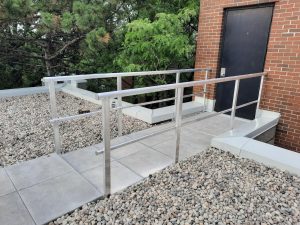 “The number of roof fall-related injuries is alarming, so it’s only natural that local and national standards are getting stricter,” says the Skyline safety rep, explaining, “Today, more and more third-party service providers have their own safety guidelines that prevent employees from working on roofs unless the right safety equipment and protocols are in place.”
“The number of roof fall-related injuries is alarming, so it’s only natural that local and national standards are getting stricter,” says the Skyline safety rep, explaining, “Today, more and more third-party service providers have their own safety guidelines that prevent employees from working on roofs unless the right safety equipment and protocols are in place.”
Aligning with such standards is a necessary challenge, especially since failing to keep a building compliant or ensure an installation is done to local safety guidelines can lead to serious injuries and costly liabilities. As such, it’s important to recognize hazards as they emerge and never lose sight of one’s safety responsibilities.
“It’s about accessing the roof safely, while working in a hazard-free environment, in order to get back down from the roof safely,” says Ghinn, adding, “The fact is that the number of roof fall-related injuries is alarming, meaning there is room to improve on safety. The good news, though, is that the risks we’re seeing out there today can be mitigated with the right partners and height safety solutions that are readily available.”
Rising to the challenge with the right safety equipment
example, says the Skyline rep: “We see too many access ladders that are cut short at the bottom, requiring an extension ladder to gain access to the actual roof access ladder itself. This is often done to restrict access to the public, but climbing a small ladder to grab the roof access ladder to then climb onto it is just simply dangerous.
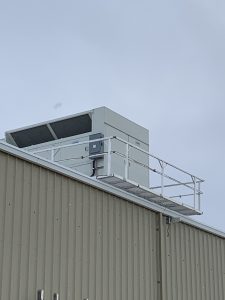
That’s why we developed a lockable gate to block the first five feet of steps and restrict unwanted access. ”The ability to manufacture ladders, guardrails, walkways, and various other rooftop safety solutions in modular sections is also proving to be a benefit for today’s contractors. These solutions can be transported to the roof via a service elevator versus renting a crane, while also being installed in a fraction of the time. All while offering the capability to customize a solution that best fits the needs of the roof and local guidelines.“The savings become quite substantial for all parties,” says Skyline’s rep, explaining, “Our non-penetrating permanent guardrail system, for example, is designed to be lightweight and modular, making it quick and simple to install without needing to fasten into the existing roof frame. This eliminates the need to reseal the roof membrane for old or newly warrantied roofs after an installation.”
Protecting workers and staying in compliance means understanding your rooftop hazards before heading up onto the roof, while having a solution in place to mitigate the risks as they unfold. After all, adds Ghinn, “Nobody should discover safety by accident.”
